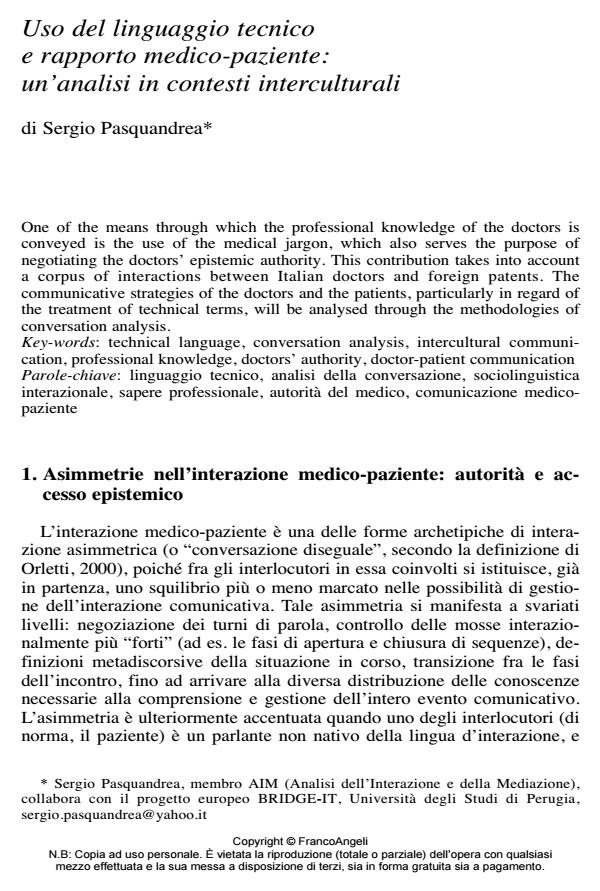Uso del linguaggio tecnico e rapporto medico-paziente: un’analisi in contesti interculturali
Journal title SALUTE E SOCIETÀ
Author/s Sergio Pasquandrea
Publishing Year 2013 Issue 2013/1
Language Italian Pages 18 P. 76-93 File size 134 KB
DOI 10.3280/SES2013-001007
DOI is like a bar code for intellectual property: to have more infomation
click here
Below, you can see the article first page
If you want to buy this article in PDF format, you can do it, following the instructions to buy download credits

FrancoAngeli is member of Publishers International Linking Association, Inc (PILA), a not-for-profit association which run the CrossRef service enabling links to and from online scholarly content.
One of the means through which the professional knowledge of the doctors is conveyed is the use of the medical jargon, which also serves the purpose of negotiating the doctors’ epistemic authority. This contribution takes into account a corpus of interactions between Italian doctors and foreign patents. The communicative strategies of the doctors and the patients, particularly in regard of the treatment of technical terms, will be analysed through the methodologies of conversation analysis.
Keywords: Technical language, conversation analysis, intercultural communication, professional knowledge, doctors’ authority, doctor-patient communication
Sergio Pasquandrea, Uso del linguaggio tecnico e rapporto medico-paziente: un’analisi in contesti interculturali in "SALUTE E SOCIETÀ" 1/2013, pp 76-93, DOI: 10.3280/SES2013-001007